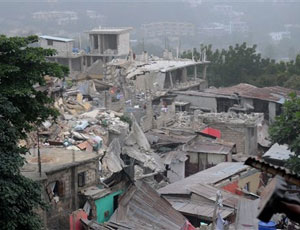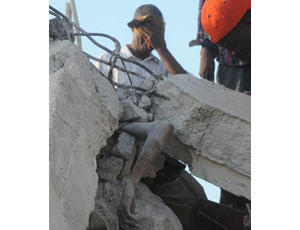As rescuers in Haiti struggled to locate victims of a devastating 7.0 magnitude earthquake that struck the island at 4:53 p.m. on Jan 12, the U.S. government and construction industry mobilized to assist.


U.S. engineers familiar with the Caribbean also speculated that impoverished Haiti and its structures may have existed in a seismic safety time-warp with 1970s standards or worse.
The extent of the devastation from the quake, the most severe to hit the island in 202 years, is still unclear. The U.S. Coast Guard has launched reconnaissance flights to assess the extent of the damage. “I think it will be very important ...just to kind of get that initial assessment...of exactly what we’re dealing with,” says Philip Crowley, a spokesman for the State Dept.
According to initial reconnaissance, most of the damage appears to have occurred within the capital city of Port-au-Prince, says Cheryl Mills, counselor to the Secretary of State. “There are numerous structures that have sustained substantial damage, and we also know that there have been not insignificant numbers of casualties,” she says. The port and United Nations peacekeeping force headquarters have also sustained considerable damage, officials say.
Haiti, at 10,641 sq mi., is about the size of Maryland and has a population of 9 million. It is on the western end of the island of Hispaniola, which it shares with the Dominican Republic. The Port-au-Prince-area population is 1.76 million, with 1.12 million people living within the city proper.
President Obama pledged a “swift, coordinated and aggressive effort to save lives,” and named U.S. Agency for International Development Chief Rajiv Shaj to coordinate the American response. “The people of Haiti will have the full support of the United States in the urgent effort to rescue those trapped beneath the rubble, and to deliver the humanitarian relief—the food, water and medicine—that Haitians will need in the coming days,” Obama said.
The top priority for the next few days will be rescue and recovery, Obama said. The U.S. AID has mobilized a Disaster Assistance Response Team (DART) from San Jose, Calif., as well as the Fairfax County Urban Search and Rescue Team from Virginia and the Los Angeles County Search and Rescue Team. The search and rescue teams will be composed of up to 72 personnel, six search and rescue canines and up to 48 tons of rescue equipment. Those teams have already arrived in Haiti, administration officials said.
Secretary of State Hillary Clinton said that a U.S. military team was also “on the ground” conducting an assessment and trying to establish an air traffic control system, which was disrupted in the earthquake. However, the airport itself appears to be relatively undamaged.
The U.S. Army Corps of Engineers has not yet received a “direct mission for support” in Haiti, says Major Marc D. Young, a Corps spokesman, “but we stand ready to assist and we are in coordinating with USAID, the Federal Emergency Management Agency and United States Southern command as part of a national contingency support response.”
Based on the conditions on the island it may be a month or so before the Earthquake Engineering Research Institute will be sending a team to study the damage. “Organizations like EERI are actively working on and considering the issue,” says Farzad Naeim, EERI president and vice president-general counsel of structural engineer John A. Martin & Associates Inc., Los Angeles.
“However, at the moment, given the human toll of this disaster and the situation on the ground at Haiti,...



Post a comment to this article
Report Abusive Comment